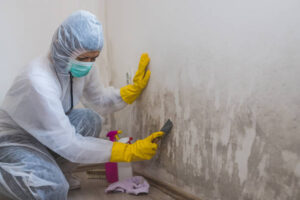
Drying out your home or business after water damage is indeed crucial to preventing further damage and the growth of mold and rust. The steps outlined below are important for efficient water damage cleanup. Here’s a summary of each step:
1. Water Removal / Sump Pump
If you have standing water that is several inches deep, a sump pump is a valuable tool to continuously move water out of the house. You can rent one for short-term use or purchase a sump pump for more extended or recurrent needs.
2. Remove Wet Items
Take wet rugs and furniture outside to reduce indoor humidity levels. Removing sheet vinyl or linoleum flooring can promote evaporation. Wet insulation under floors should be disposed of as it can trap moisture.
3. High-Powered Fans
High-powered fans can be very effective in speeding up the drying process. They help to circulate air and remove moisture. Avoid using your central air conditioner or furnace blower if the HVAC ducts were exposed to water, as they can spread contaminants.
4. Open Windows and Doors
Opening windows and doors when humidity isn’t too high can help promote natural air circulation. It’s essential to let the fresh air in and allow moisture to escape. Also, open closets, cabinets, and remove drawers to improve airflow within enclosed spaces.
5. Preserve Personal Items
To preserve wet books and photos, place them in plastic bags and store them in a frost-free freezer. This can buy you time to properly dry and restore these items, preventing further deterioration, mold, and mildew growth.
6. Dehumidify
Using a portable dehumidifier in specific areas can expedite moisture removal from the air. This is especially useful in bedrooms or basements. Ensure the room is sealed to prevent additional humidity from entering. Consider getting a larger dehumidifier to reduce the frequency of emptying the water container.
7. Remove Water From Carpets/Surfaces
Wet/Dry shop vacuums designed for use in wet conditions can help remove water from carpets and other surfaces. They are valuable for saving rugs and wall-to-wall carpeting. Regular household vacuums are not suitable for wet conditions.
Following these steps can significantly increase the chances of salvaging belongings and minimizing the long-term effects of water damage. However, for more extensive and severe water damage, it’s often best to consult with professionals who have the expertise and equipment to handle the situation effectively.
It’s important to note that these steps are general guidelines, and the extent of water damage can vary widely. In some cases, especially if the water damage is extensive or if there are safety concerns (such as electrical issues), it’s advisable to seek professional help from water damage restoration specialists.
Additionally, it’s crucial to prioritize your safety during the cleanup process. Wear appropriate protective gear, such as gloves and masks, and be cautious of slippery surfaces and potential hazards in the water-damaged area.
Lastly, after the initial cleanup, it’s essential to thoroughly inspect your property for any hidden damage and monitor the affected areas for signs of mold growth or other issues in the following weeks and months. Addressing water damage promptly and thoroughly can help prevent long-term problems and ensure a safer and healthier living environment.
